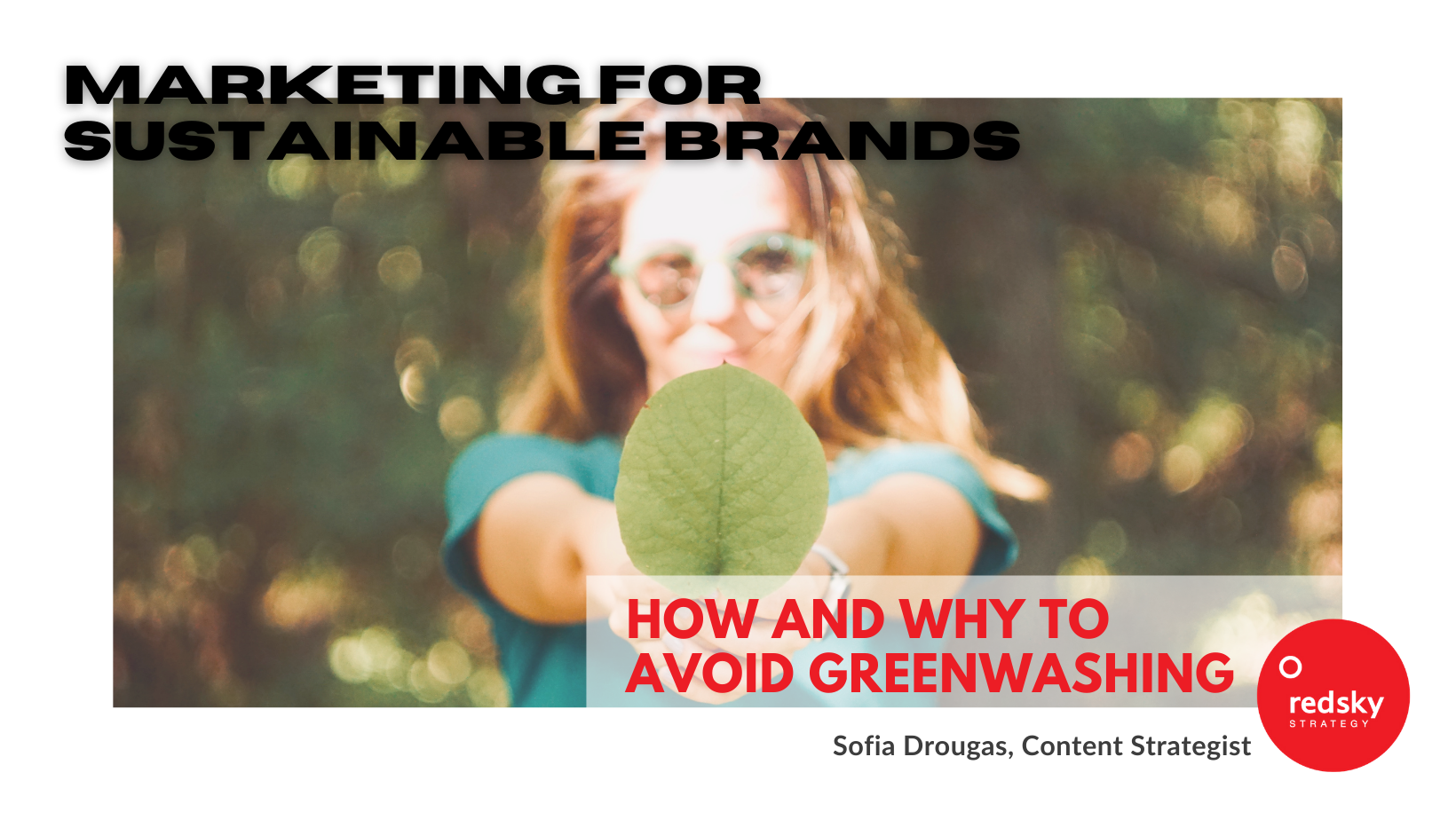News
How to Avoid Greenwashing in Marketing

Today is Earth Day. Along with being a notable day for environmentalists and sustainability efforts, it is also significant for marketers. In today’s day and age, there is a high demand and expectation for sustainable products and services. So, how can brands position themselves as advocates for environmental issues, while staying away from leveraging sustainability for the wrong reasons? Here’s why your brand should think sustainably now and in the long run, and four tips for a successful green marketing campaign. #1? Avoid greenwashing.
First, let’s take a look at the history of sustainability.
Along with the 1960’s hippie movement comes the introduction of green marketing. The environmentalist movement takes off, and an increasing number of companies decide to create a new “green image.”
It’s 1970, and Americans are celebrating the first Earth Day. Piggybacking on the impact of environmentalists, corporations spend eight times more on establishing a green image through advertising than the amount they spend on environmental research initiatives.
After witnessing gross false marketing around Earth Day, the term “Greenwashing” is coined in the 1980s by by environmentalist Jay Westerveld. (More on greenwashing later.)
1993. Brands start using environmental focus as a marketing point. Thus marks the beginning of “green brands.” Additionally, Fortune publishes a list of “Top 10 Companies in Environmental Management.”
Flash forward to 2021. The market (beauty, fashion, home products, you name it) is flooded with sustainable brands, all touting natural ingredients and low environmental impact. But how many of these claims are actually true? How can your brand veer away from empty promises, and lean into this quickly expanding sustainable movement?

Why does sustainability matter for my company?
Just take a look at the internet’s biggest consumer base: Gen Z and millennials. Compared to Boomers, Forbes found that younger generations not only seek green brands, but are also willing to pay more for them. A Nielsen report found that 73 percent of Millennials and 62 percent of Generation Z’ers prefer to purchase from and support sustainable brands.
Knowing that the younger generations are more concerned with environmental and social causes, two things in particular stand out. 1) It is important for brands to integrate eco-friendly products or services, and 2) Brands should use their social platforms as a means to connect with the eager sustainability-minded consumer. Supporting a common goal (and the desire to create real change) is a new driving factor for loyal customer support.
Despite the fact that today is Earth Day, sustainability is an issue that consumers care about year round. So, here’s how your brand can successfully integrate and support green marketing – today and everyday.

4 TIPS for A Successful Green Marketing Campaign
-
Avoid greenwashing at all costs.
As mentioned previously, greenwashing is when brands market themselves as “environmentally friendly” without taking steps to effectively shift their impact. In other words, many brands have leveraged sustainability for the wrong reasons, depicting themselves as eco-friendly to make more money.
Greenwashing is easily detected by using phrases that can’t be backed up, such as “all-natural” and “eco-friendly.” Alternatively, some brands may use images of trees and leaves to signal a neutral environmental impact, or their position in the fight against climate change.
One thing is certain – greenwashing is a foolproof way to position your brand on the receiving end of many unhappy customers. Not only that, but customer loyalty will be lost (and not easily rebuilt).
-
Transparency is key.
Instead of thinking about how to change your product branding or messaging, sit down with your team and set concrete steps for sustainability efforts, along with clear deadlines.
After determining your level of commitment and clearly outlined steps, share your efforts on your website and any social platforms. This willingness to be transparent not only shows your commitment to making a positive impact, but also keeps your brand accountable and helps to manage consumer expectations.
Not only that, but sharing your company’s green goals can help GAIN customer’s trust. Just like false claims and advertising, a lack of information leads to a lack of trust. Keep in mind that the final aspect of your green marketing campaign is your consumer, and losing their loyalty would be a huge loss.
Even if your actions are small, being transparent is always better than being dishonest.
-
Take a holistic approach.
Sustainability is a way of living for many people wanting to create lasting change in the world. Therefore, consumers often look beyond the products and marketing, and into the core values of your company. Is sustainability part of your overall strategy?
If you are a product-based company, think about the environmental impact of your entire production cycle. Where are your materials sourced from? How are your products made? Where do the bi-products and waste get discarded?
Taking a holistic approach to sustainability may mean the implementation of many changes within your company. While it may seem overwhelming, the green movement will only grow stronger as Gen Z’ers enter the workforce. So, be patient and consistent with your efforts – a transition to green marketing and sustainability company-wide won’t happen overnight!
Lastly…
-
Collect credentials when applicable.
Credentials denote authenticity. Be mindful when applying for and using credentials, because there are strict regulations about how you can label your packages. Using terms like ‘recyclable’, ‘eco-friendly’ or ‘sustainable’ could be illegal (if there is no evidence to back these claims).
Having sustainability credentials will not only enable you to back your claims, but will also make it easier for consumers to choose your brand over the competition.

Sustainability is more than a trend.
Younger generations are clearly prioritizing eco-friendly and impactful brands, while moving away from (or even boycotting) those that aren’t striving to make a difference. Don’t be one of the brands that gets stuck behind the bandwagon.
Be transparent about your commitment to sustainability. Make shifts in your production cycle, and include sustainability in your company’s values. The reward? Growing consumer loyalty, bolstered trust, and a greener footprint on the planet.
If you want to learn more about green marketing, the team at RedSky is eager to share their knowledge! Reach out through our website to connect.
